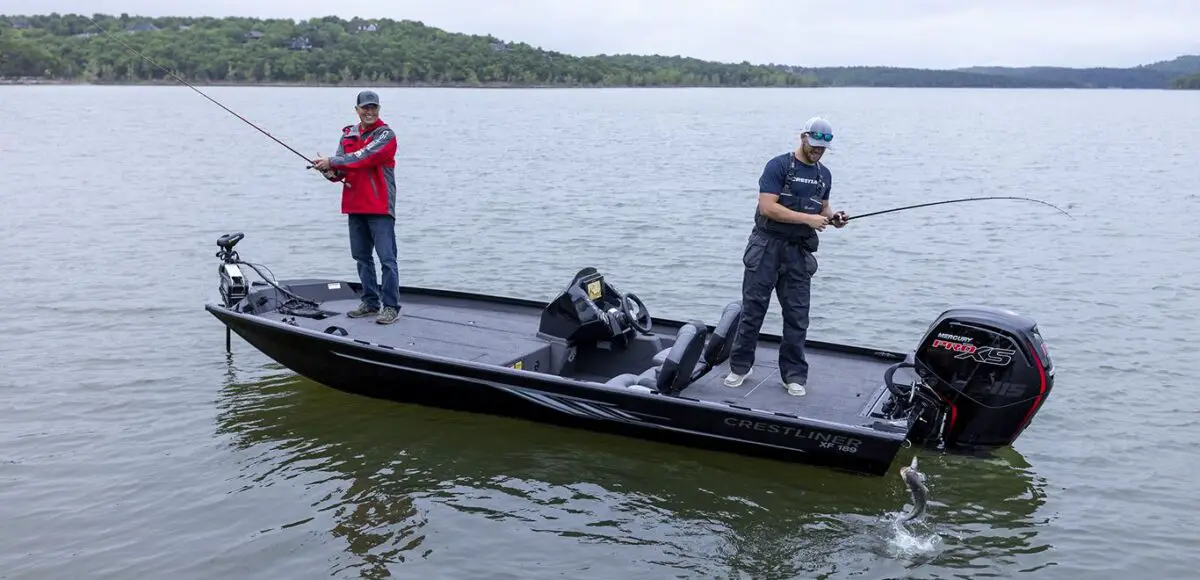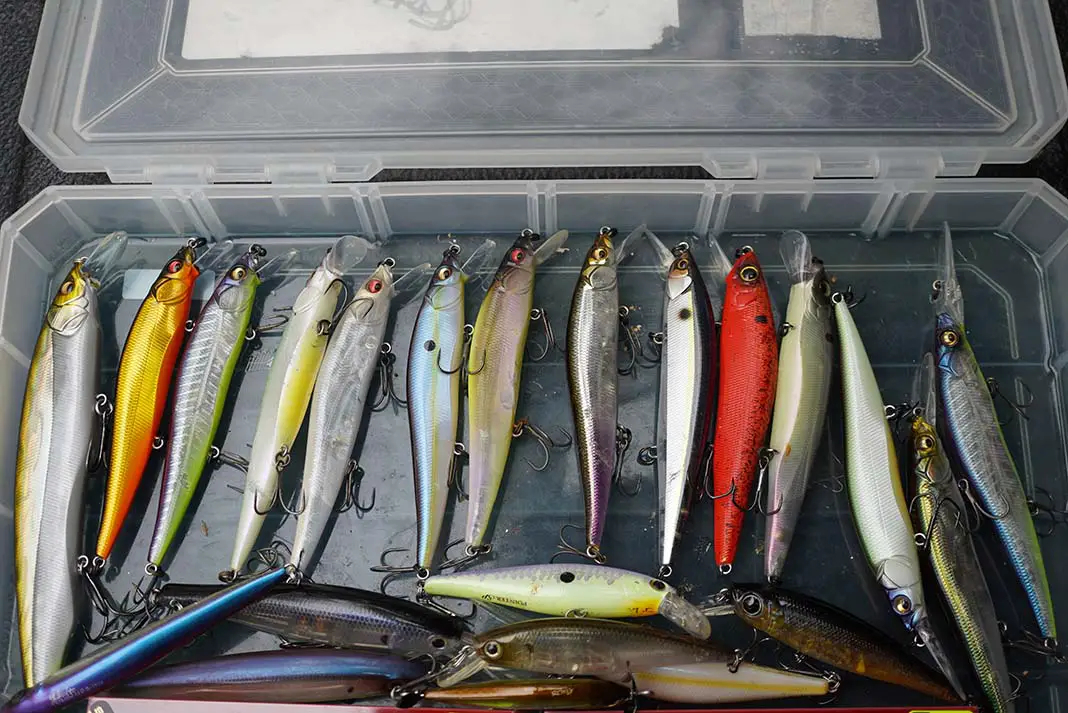The best barometric pressure for bass fishing is between 29.80 and 30.40 inches of mercury (inHg). During stable or slightly rising pressure, bass are more likely to be active and feeding, making it an optimal time for successful angling.
I’ve spent countless hours chasing the elusive and exciting bass on the water. Over the years, I’ve learned there’s more to a successful fishing trip than just casting a line and hoping for the best. Barometric pressure is a crucial, yet often overlooked factor that plays a significant role in bass fishing.
I’ll share my experiences and insights on the best barometric pressure for bass fishing, helping you maximize your chances of landing that trophy catch. We’ll explore the science behind barometric pressure, how it affects bass behavior, and tips for adapting your fishing techniques to various pressure conditions.
| Barometric Pressure Condition | Pressure (inHg) | Impact on Bass Behavior | Likelihood to Catch Bass |
|---|---|---|---|
| High Pressure (Stable) | 30.40 – 30.70 | Bass are active, feeding, and holding close to cover | ⭐⭐⭐⭐⭐ |
| Slightly Rising Pressure | 30.10 – 30.40 | Bass activity increases, feeding and moving around | ⭐⭐⭐⭐ |
| Falling Pressure | 29.80 – 30.10 | Bass become sluggish, less willing to chase lures | ⭐⭐⭐ |
| Rapid Pressure Changes | Variable | Bass are disoriented, stressed, and significantly less active | ⭐⭐ |
| Extremely Low Pressure | Below 29.80 | Bass are highly inactive, minimal feeding activity | ⭐ |
Table of Contents
Impact of Barometric Pressure on Bass Fishing
Barometric pressure, also known as atmospheric pressure, is the force exerted on a given area by the weight of the atmosphere above it. It is measured in inches of mercury (inHg) or millibars (mb). Weather systems, such as high-pressure and low-pressure areas, directly influence the barometric pressure.
Bass, like many fish species, are sensitive to changes in barometric pressure. This sensitivity stems from their swim bladders (air-filled sacs that help them maintain buoyancy). When the pressure outside the swim bladder changes, it can affect the fish’s comfort and activity levels.

High Pressure (Stable or Rising Barometric Pressure)
When the barometric pressure is high, stable, or slightly rising, bass are generally more active and feeding. This is because their swim bladders are comfortably adjusted to the external pressure, allowing them to move around easily. The ideal range for bass fishing is between 29.80 and 30.40 inHg.
During these conditions, I’ve found that bass often hold close to cover or structure, such as submerged trees, docks, or weed beds. They are more likely to strike lures and baits presented near these areas, making it a great time to cast your line.
Low Pressure (Falling Barometric Pressure)
When the barometric pressure drops, it often signals the approach of a weather system, such as a cold front or storm. In response, bass may become sluggish and less willing to chase lures. This is because the rapid change in pressure can cause discomfort in their swim bladders, making it harder for them to maintain buoyancy and move around.
I typically slow my presentation during low-pressure periods and use more subtle lures, such as soft plastics, to entice the less active bass.
Rapid Pressure Changes
When the pressure changes rapidly, such as during a sudden storm or weather front, bass can become disoriented and stressed. Their feeding activity may drop significantly during these periods, making it difficult to catch them.
In my experience, it’s best to wait for the pressure to stabilize before resuming your bass fishing trip. Once the pressure begins to level out or rise, the bass will adjust and become more active again.
How Weather Impacts Bass Behavior
I’ve spent countless hours observing how various weather fronts impact bass behavior. Understanding these impacts can help you adapt your fishing strategy and improve your success on the water.

Cold Fronts
Cold fronts occur when a mass of cold air replaces warmer air, often causing a rapid drop in temperature. This temperature change can have a significant impact on bass behavior. In my experience, the sudden shift to cooler conditions can make bass more lethargic and less willing to feed. They seek deeper, warmer water and hold tight to cover or structure.
During a cold front, I usually switch to slower, more subtle presentations and focus on fishing in deeper water. Soft plastics, jigs, and slow-moving crankbaits can be effective in these conditions.
Warm Fronts
Warm fronts occur when a warm air mass overtakes cooler air, gradually increasing temperature. Bass typically respond positively to warm fronts, becoming more active and willing to feed as the water temperature rises. They often move from deeper water to shallower areas, searching for food near the surface or close to cover.
During a warm front, I’ve found that fast-moving, aggressive lures such as spinnerbaits, topwater plugs, and swimbaits can lead to successful catches. Targeting shallow, warm areas and fishing around cover or structure can also increase your chances of catching bass.
Storm Fronts
Storm fronts, accompanied by heavy rain, strong winds, and thunderstorms, can have varying effects on bass behavior. The reduced light penetration from overcast skies can make bass more active during the day, as they feel less exposed to predators. However, the rapid pressure changes associated with storm fronts can make bass uncomfortable and less likely to feed.
In my experience, fishing before a storm arrives, when the pressure is dropping, can be a prime time to catch bass. Using noisy, attention-grabbing lures like spinnerbaits, chatterbaits, or topwater plugs can help you capitalize on the heightened activity.

Post-frontal Conditions
After a weather front has passed, the barometric pressure stabilises, and bass behavior returns to normal. It may take some time for the bass to adjust, especially after a cold front, but once the pressure starts rising, they will typically resume feeding.
I use a versatile approach during post-frontal conditions, adjusting my lures and presentations based on the specific conditions and bass activity levels. Monitoring the weather and pressure trends can help you determine the best tactics for each situation.
bass fishing Tips For different pressure conditions
In this section, I’ll share some practical tips for bass fishing during various pressure conditions, helping you make the most of your time on the water.
| Barometric Pressure Condition | Best Lures | Fishing Techniques |
|---|---|---|
| High Pressure (Stable) | Crankbaits, spinnerbaits, swimbaits | Fishing around cover, varying retrieval speeds |
| Slightly Rising Pressure | Crankbaits, spinnerbaits, swimbaits | Fishing around cover, varying retrieval speeds |
| Falling Pressure | Soft plastics, jigs, suspending jerkbaits | Slow presentation, targeting deeper water |
| Rapid Pressure Changes | Chatterbaits, topwater plugs | Noisy lures, targeting disoriented bass |
| Extremely Low Pressure | Finesse soft plastics (drop-shot, shaky head, wacky rig) | Slow, methodical presentation, deep water |
Rising Pressure
Focus on fishing around cover or structure, such as submerged trees, docks, or weed beds, where bass are likely to be holding.
Use a variety of lures, including crankbaits, spinnerbaits, and swimbaits, to cover water quickly and target active bass.
Experiment with different retrieval speeds and depths to determine the bass’s preferred presentation for that day.
Falling Pressure
Slow down your presentation and use subtle lures, such as soft plastics, jigs, or suspending jerkbaits, to entice less active bass.
Focus on deeper water or areas where bass may seek shelter, such as drop-offs, ledges, or submerged humps.
Pay close attention to any signs of bass activity, such as surface disturbances or birds diving for baitfish, to hone in on productive areas.
Rapid Pressure Changes
Be patient and persistent, as bass may be less likely to strike your lure during these periods.
Try using noisy or attention-grabbing lures, like chatterbaits or topwater plugs, to elicit a reaction strike from disoriented bass.
Keep safety in mind and prepare to wait out the storm or head back to shore if conditions become too dangerous.
Extremely Low Pressure
Fish very slowly and methodically, using finesse techniques like drop-shotting, shaky head, or wacky-rigged soft plastics to coax bites from inactive bass.
Target deeper water or isolated cover, where bass may seek refuge during periods of low pressure.
Adjust your expectations and be prepared for a potentially slower day of fishing. Use the time to practice your skills or scout new fishing spots for future trips.
Adapting fishing techniques to barometric pressure changes
I’ve improved my success rate and made the most of each trip on the water by adapting my fishing techniques to changes in barometric pressure.
Monitoring Pressure Changes
The first step in adapting your techniques is to monitor barometric pressure changes. Keep an eye on the weather forecast and use a barometer, either a standalone device or an app on your smartphone, to track pressure trends. This will help you anticipate how bass behavior may change and adjust your tactics accordingly.
Lure Selection
One of the most critical aspects of adapting to pressure changes is choosing the right lures. Different lures can be more effective under specific pressure conditions:
- High Pressure (Stable) and Slightly Rising Pressure: Use a variety of lures, such as crankbaits, spinnerbaits, and swimbaits, to target active bass.
- Falling Pressure: Opt for slower, more subtle lures like soft plastics, jigs, or suspending jerkbaits to entice less active bass.
- Rapid Pressure Changes: Employ noisy or attention-grabbing lures like chatterbaits or topwater plugs to provoke reaction strikes from disoriented bass.

Presentation and Retrieval
Adjusting your presentation and retrieval speed is another essential part of adapting to pressure changes:
- High Pressure (Stable) and Slightly Rising Pressure: Experiment with different retrieval speeds and depths to find the bass’s preference.
- Falling Pressure and Extremely Low Pressure: Slow down your presentation, using finesse techniques like drop-shotting, shaky head, or wacky-rigged soft plastics to coax bites from inactive bass.
Location and Depth
As barometric pressure changes, bass may move to different areas or depths for comfort and food. Adjust your fishing location accordingly:
- High Pressure (Stable) and Slightly Rising Pressure: Focus on fishing around cover or structure where bass are likely to be holding.
- Falling Pressure and Extremely Low Pressure: Target deeper water or areas with significant cover, such as drop-offs, ledges, or submerged humps, where bass may be seeking shelter.
Conclusion
Adapting your fishing techniques to barometric pressure changes can greatly improve your success on the water. By monitoring pressure trends, selecting the right lures, adjusting your presentation, and targeting the appropriate locations, you can stay one step ahead of the bass and make the most of every fishing trip.
